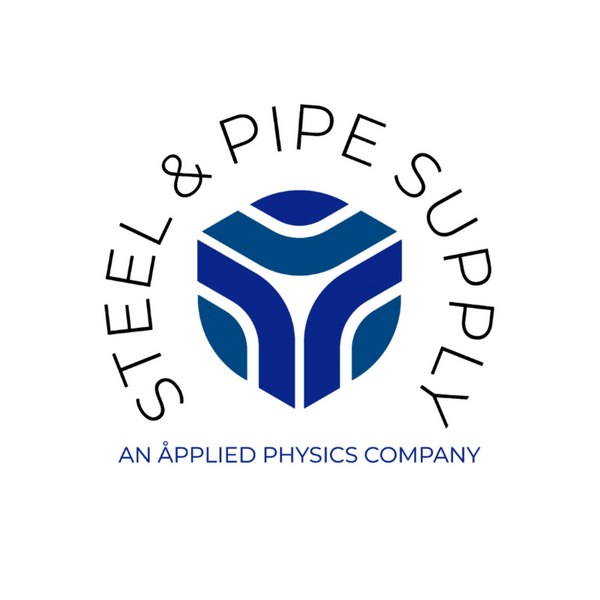Pipe Expansion Joints and Thermal Movement: Design and Installation Guide
Share
Pipe expansion joints are essential components in modern piping systems. They absorb movement caused by thermal expansion, contraction, vibration, and mechanical forces.
This comprehensive guide explains the basics of thermal movement in piping, the critical role of expansion joints, key design and selection points, best practices for installation, troubleshooting, and how to stay compliant with industry standards.
Whether you’re an engineer, contractor, facility manager, or technical buyer, this article will help you ensure the safety, reliability, and long-term performance of your piping systems.
Understanding Thermal Movement in Piping Systems
1) What Is Thermal Movement?
Thermal movement refers to the expansion and contraction of pipe materials as temperatures fluctuate.
When pipes are heated, they expand; when cooled, they contract. The degree of movement depends on the pipe material, temperature range, and length of the pipe.
For example, a 100-foot steel pipe heated to 200°F can exert over 120,000 pounds of force due to expansion if not properly managed
2) Why Is It Important?
If thermal movement is not accommodated, it can lead to:
- Pipe misalignment and joint damage
- Stress accumulation, fatigue, or rupture
- Buckling, warping, or catastrophic failure
- Leaks and increased risk of corrosion
- Disruption of fluid flow and system reliability.
What Are Pipe Expansion Joints?
Pipe expansion joints are flexible connectors installed in piping systems to absorb movement caused by thermal expansion, contraction, vibration, and mechanical forces.
Their primary function is to prevent damage, leaks, or catastrophic failure by accommodating these movements and reducing stress on the pipes and connected equipment.
Key Functions
- Absorb axial, lateral, and angular movements
- Reduce stress and vibration
- Prevent misalignment and mechanical failure
- Maintain system integrity and safety.
Types of Pipe Expansion Joints
1) Metal Expansion Joints
- Material: Stainless steel or high-performance alloys
- Applications: High temperature/pressure, power plants, refineries, chemical processing
- Subtypes: Single bellows, universal, hinged, gimbal, externally pressurized
2) Rubber Expansion Joints
- Material: EPDM, Neoprene, Nitrile, often fabric or metal reinforced
- Applications: HVAC, water treatment, industrial pipelines, pump connections
- Subtypes: Single sphere, double sphere, tied rubber joints
3) Fabric Expansion Joints
- Material: Heat-resistant fabrics and insulation
- Applications: Flue gas systems, air handling, exhaust systems
- Subtypes: U-type, V-type, rectangular
4) Specialty Joints
- Metraloop: Handles movement in any direction, minimal anchor load
- Copper Compensators: Maintenance-free, used in heating systems.
Design Considerations for Expansion Joints
Key Factors to Consider
- Movement Profile: Axial, lateral, angular, and torsional movements expected
- Material Compatibility: Match with pipe material and process media
- Pressure and Temperature Ratings: Ensure suitability for system conditions
- End Connections: Flanged, welded, threaded, or other as required
- Environmental Factors: UV exposure, chemicals, physical damage risk
- Cycle Life: Number of expected movement cycles (start-up/shut-downs, thermal cycles).
Calculating Thermal Expansion
ΔL=L×α×ΔTWhere:
- ΔL = Change in length
- L = Original pipe length
- α = Coefficient of thermal expansion
- ΔT = Temperature change
How to Select the Right Expansion Joint
The STAMP Method
- Size: Pipe and joint dimensions
- Temperature: Operating, max, and min
- Application: Media, vibration, velocity
- Movement: Axial, lateral, angular, torsional
- Pressure: Working and surge pressures
Best Practices
- Match joint type to application (metal for high temp/pressure, rubber for vibration/noise, PTFE for chemicals)
- Avoid torsion never twist the joint during installation
- Install at neutral length for maximum movement capacity
- Use pipe guides and anchors to control movement and prevent misalignment
- Document installation for future maintenance.
Installation Guidelines and Best Practices
Pre-Installation
- Verify material and specification
- Inspect for shipping damage
- Ensure pipes are properly aligned
During Installation
- Install in a neutral, uncompressed state
- Use proper anchors and pipe guides
- Support pipes to prevent sagging
- Tighten flange bolts evenly in a cross-pattern
- Do not remove shipping restraints until fully installed
- Protect metal bellows from welding heat
Final Checks
- Confirm movement ratings and compatibility
- Ensure correct joint type for expected movement
Common Challenges and Troubleshooting
| Problem | Causes | Solution/Prevention |
|---|---|---|
| Visible Damage | Overpressure, UV, chemical attack | Replace with correct material, protect from exposure |
| Leaks | Loose bolts, bad gaskets, misalignment | Retighten, replace gaskets, realign, replace joint |
| Misalignment | Poor installation, system shifts | Realign, reinforce, proper install |
| Stiff/Hardened Joints | Aging, chemical/temperature issues | Replace, select correct material |
| Noise/Vibration | Bad install, degraded material | Reinstall, replace, select flexible joint |
| Bellows Fatigue | Excessive movement, wrong material | Use multi-ply, follow ratings, replace as needed |
| Corrosion/Cracking | Incompatible material, contamination | Use resistant material, protect, coat |
Preventative Measures
- Routine inspections and scheduled maintenance
- Environmental protection (UV, chemical shields)
- Documentation of joint condition and maintenance
Conclusion
Pipe expansion joints are critical for managing thermal movement and ensuring the safety, reliability, and longevity of piping systems across industries.
By understanding the principles of thermal movement, selecting the right expansion joint, following best installation practices, and adhering to industry standards, you can prevent costly failures and maintain optimal system performance.
For complex or high-risk applications, always consult with experienced engineers or manufacturers to ensure the best solution for your needs.
Frequently Asked Questions (FAQs)
1. What is a pipe expansion joint and how does it work?
A pipe expansion joint is a flexible connector that absorbs movement (axial, lateral, angular) in piping systems caused by thermal expansion, contraction, vibration, or mechanical forces.
2. Why are expansion joints necessary in piping systems?
They prevent damage from thermal movement, reduce stress on anchors and supports, and help maintain system integrity.
3. How do I select the right expansion joint?
Selection depends on movement type, pressure, temperature, media, pipe size, and installation constraints. Use the STAMP method and consult manufacturer guidelines.
